Alternative Museum of The Sudan: Exhibition of work by Amado Alfadni, curated by Najlaa El-Ageli, at the Sulger-Buel Gallery in London
Following our ‘Dialogues on the Art of Arab Fashion’ webinar episode on 16 June, our guest, Egyptian-Sudanese artist Amado Alfadni spoke to art and culture advisor Sophie Kazan shedding more light on aspects of this fascinating exhibition, presented here in the second of a three-part series with the focus on his Askari Project.
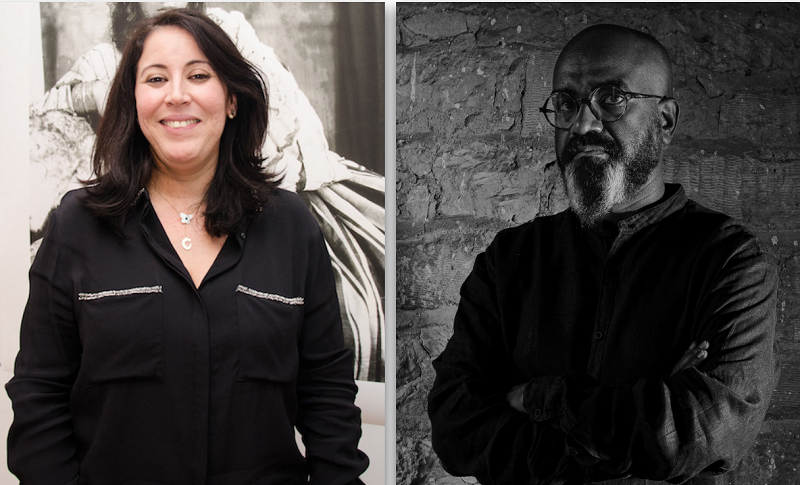 Curator Najlaa El-Ageli and Artist Amado Alfadni
Curator Najlaa El-Ageli and Artist Amado Alfadni During the dialogues with Reem Al Mutwalli and Najlaa El-Ageli, you shared your research about the stories of Askari soldiers ‘snatched’ from Sudan, usually as teenagers and sold into slavery – often as soldiers – to European or Arab colonial forces to fight in wars, such as the Second World War and then sold on – sometimes in the Gulf or most often into European colonies of Latin America. This story, your remaking of postcards and historical photographs and your work re-making this narrative through cloth - looks at debunking the colonial and pan-Arab narratives and reclaiming African history – Sudanese history - in many ways. You are a painter, originally, why did you choose these media?
I was interested in Ankara fabric, and I was fascinated by the way in which Dutch colonists had brought their cloth, which was originally produced using Batik in Indonesia, into Africa. I also looked at the way that it featured slogans and bore propaganda. I had visited the Africa Museum in Tervuren, Belgium and learnt of the different stories that had resulted in the propaganda of the cloth, so I decided to make my own designs, which were digitally printed onto cloth.
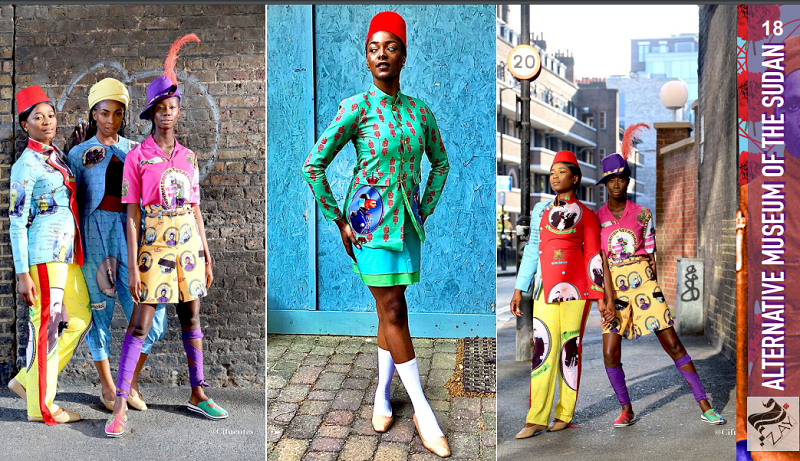 Screenshot from our webinar showing women wearing clothes made from fabric designed by Amado Alfadni as part of the Askari Project
Screenshot from our webinar showing women wearing clothes made from fabric designed by Amado Alfadni as part of the Askari ProjectYou chose to make these designs for the female shape, since women are traditionally erased from pan-Arab history in Africa, for religious reasons. This is contradictory in many ways because it was the women making the cloth and sewing it into clothing…?
Yes, women were kept out of the story in Sudan and there was a denial. This is a break with the idea and a way of looking at the taboos - denying women and denouncing enslavement.
[At this point in our conversation, curator Najlaa El-Ageli points out that many visitors to the exhibition have expressed a desire to wear or buy the designs that Alfadni has made for the female figures – he laughs…]
I think that this is an interesting idea and it would be interesting to make these designs available more generally… Yes, this is for women who did make the clothes and cut the patterns and so this is giving part of the alternative story.
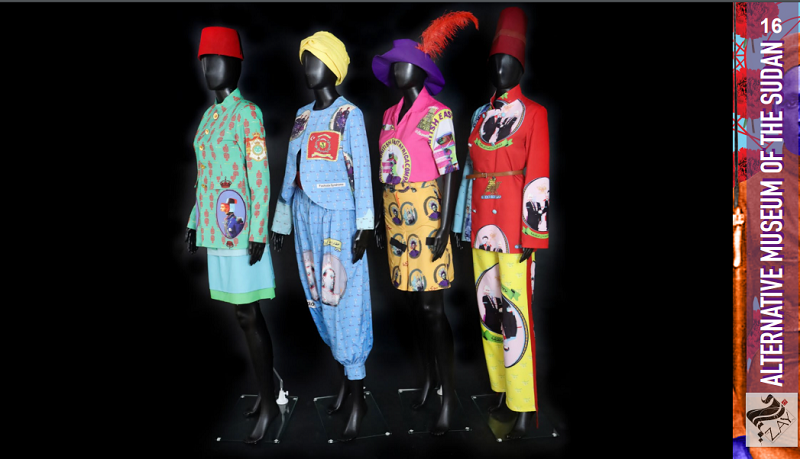 Screenshot from our webinar showing clothes made from fabric designed by Amado Alfadni as part of the Askari Project
Screenshot from our webinar showing clothes made from fabric designed by Amado Alfadni as part of the Askari ProjectThe Askari Project is an important part of the Alternative Museum of the Sudan. Why did you go about creating this alternative museum? And what reaction has your project had in Egypt, where you have shown The Alternative Museum of the Sudan and in Sudan? Surprise? Acceptance?
There is a lot of denial and taboo. My first exhibition,
Black Ivory took place in 2016 in Egypt and this is very much my own presentation of what happened. People try to say that this didn’t happen, but I have my research to say, it did.
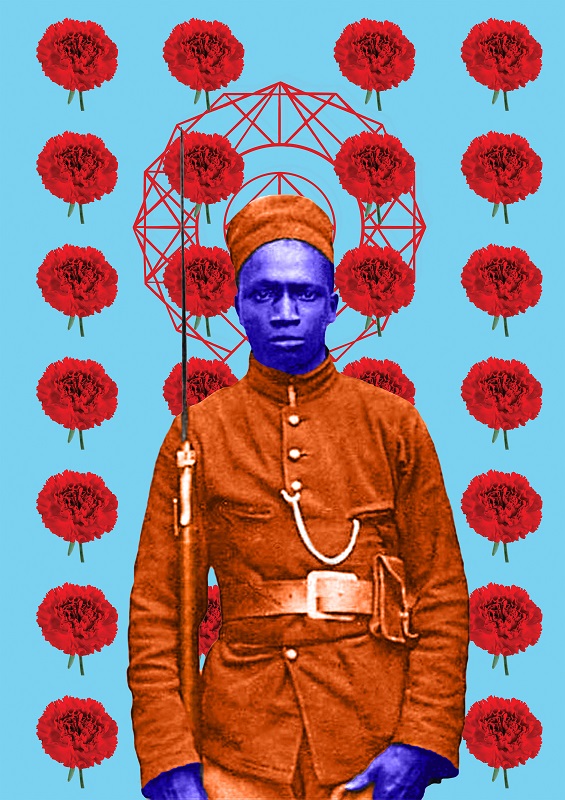 Askari 1 Photomontage digital print 2019. Amado Alfadni
Askari 1 Photomontage digital print 2019. Amado AlfadniRegarding women – your designs are re-appropriated to fit the shapes of women and you are again bringing attention to the fact that women were also enslaved and abused. You have chosen to create colourful fabric to express this very painful narrative. Why is that?
This is what I believe artists should do. It is not helpful to show negative things in a negative light. People look at them – they are drawn to understand what it is about.
***
Read the first part,
Amado Alfadni: The Mahdi Jubba Turban, here.
Read the third part,
Amado Alfadni: Kendakas and Bint Al Sudan here.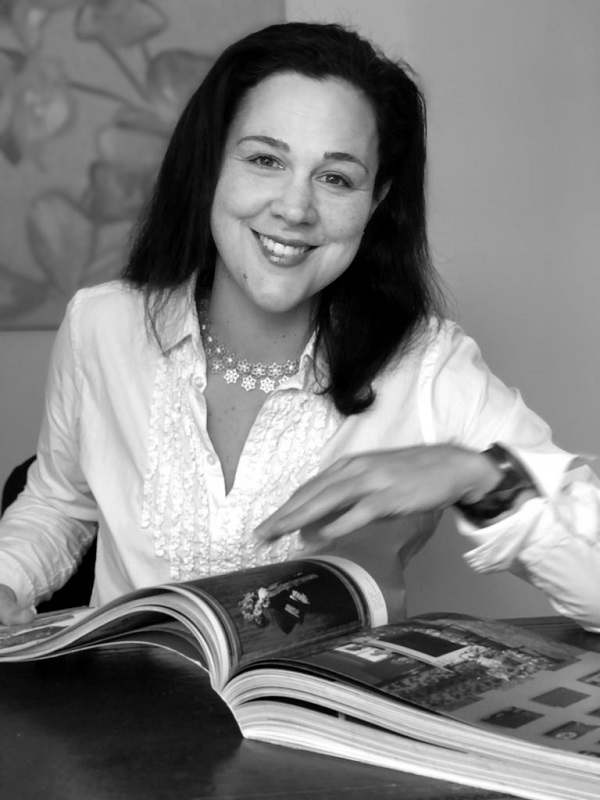 Author Sophie Kazan
Author Sophie KazanAbout the Author
Sophie Kazan fell in love with Islamic Art and decoration after visiting the Louvre in Paris. She studied History of Art at L’Ecole du Louvre and has a BA (Hons) in Art and Archaeology of Asia and Africa from SOAS (University of London). Sophie completed her Master's in History of Art from the University of Oxford and a PhD from the School of Museum Studies, University of Leicester. Her research focused on the development of contemporary art and tradition in the United Arab Emirates. Sophie writes about visual art, and she lectures on critical theories and the history of architecture at the University of Falmouth, Cornwall.
Learn more about Sophie’s work on
her website and
Instagram profile.




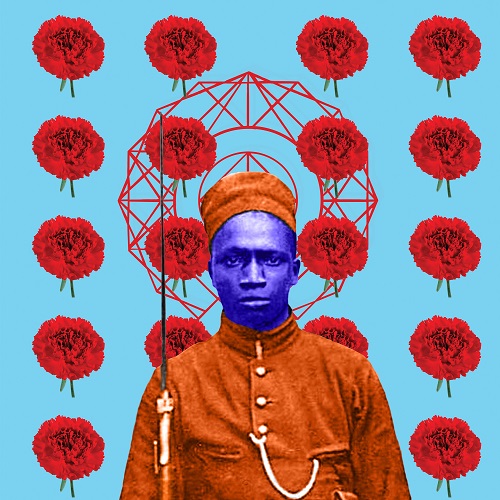
 Curator Najlaa El-Ageli and Artist Amado Alfadni
Curator Najlaa El-Ageli and Artist Amado Alfadni Screenshot from our webinar showing women wearing clothes made from fabric designed by Amado Alfadni as part of the Askari Project
Screenshot from our webinar showing women wearing clothes made from fabric designed by Amado Alfadni as part of the Askari Project Screenshot from our webinar showing clothes made from fabric designed by Amado Alfadni as part of the Askari Project
Screenshot from our webinar showing clothes made from fabric designed by Amado Alfadni as part of the Askari Project Askari 1 Photomontage digital print 2019. Amado Alfadni
Askari 1 Photomontage digital print 2019. Amado Alfadni Author Sophie Kazan
Author Sophie Kazan